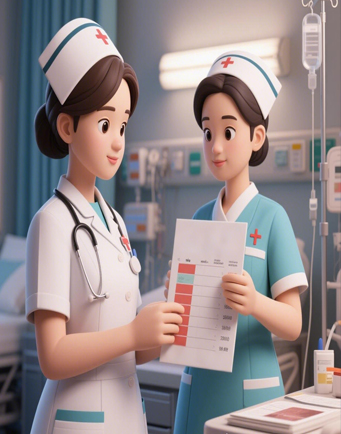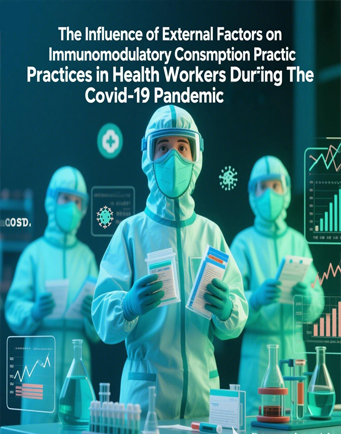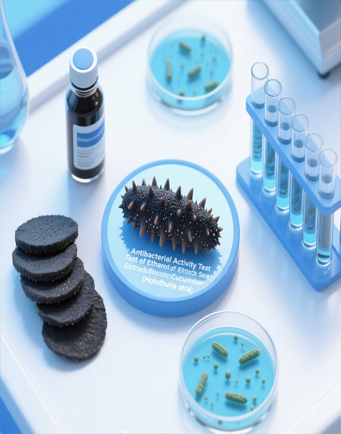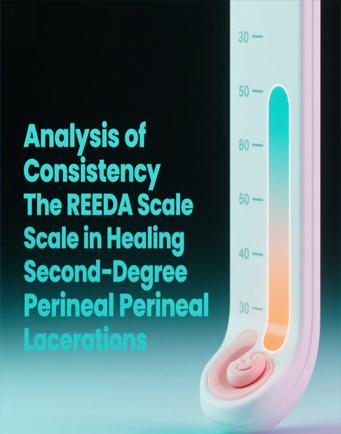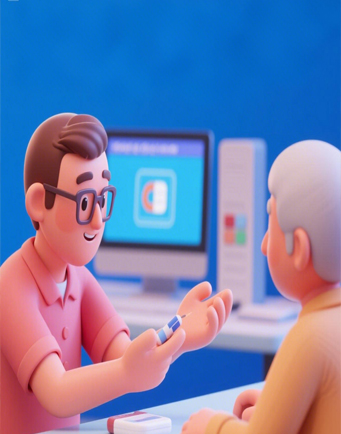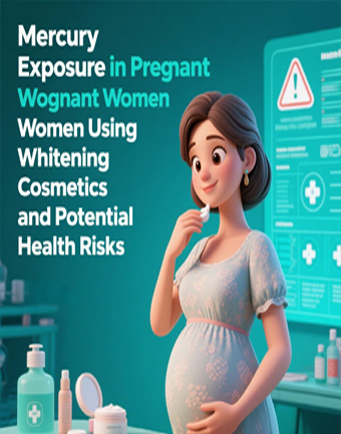Saliva pH between Gargling and without Gargling Water after Consuming Sweet and Sticky Foods
Downloads
Sweet and sticky foods are the main energy source for oral bacteria and are directly involved in lowering the pH. Gargling with boiled water after every meal can speed up the pH of the saliva in the mouth to return to normal. The objective of this study is to determine the difference in salivary pH between gargling and without gargling water after consuming sweet foods in elementary school students. The research method used was quasi-experimental with pretest and posttest with control group design. The instrument in this research was a pH meter. The population in this study were students in grades I – V of public elementary schools in Bantul with a total population of 135. The research sample used total sampling. Analysis of the research data was conducted using the Wilcoxon test, Mann Withney and Anova Test. The results showed that the pH of saliva (direct gargling) of water/0 minutes after consuming sweet and sticky foods was before 7.53 after gargling 7.99 increased by 0.46. The pH of gargling saliva 5 minutes before 7.48 after rinsing 7.63 increased 0.15. pH of saliva gargling 10 minutes, that was before 7.31 after gargling 7.3 decreased by 0.18. pH of saliva (without rinsing) water/0 minutes, which was initial pH 7.68 to 7.55 after consuming sweet and sticky foods, decreased 0 ,13. The pH of saliva without rinsing with water for 5 minutes, the initial pH was 7.70 to 7.06, decreased by 0.64. The most effective gargling time on salivary pH was gargling water immediately 0 minutes after consuming sweet and sticky foods. The time without gargling water affecting the pH of saliva after consuming sweet and sticky foods was 5 minutes.
Aldiaman, H., Adhani, R., & Adenan, A. (2016). Efektivitas Menyikat Gigi Dengan Metode Fone Terhadap Indeks Kebersihan Rongga Mulut. Dentino: Jurnal Kedokteran Gigi, 1(2), 12-16.
Amalia, N., Kaidah, S., Widodo. (2014). Perbandingan Efektifitas Berkumur Larutan The Putih (Camellia sinensisL.) Seduh Konsentrasi 100 % Dengan 50 % Dalam Meningkatkan pH Saliva. Dentino Jurnal Kedokteran Gigi, 2 (1), 29-33.
A'yun, Q., Hendrartini, J., & Supartinah, A. (2016). Pengaruh keadaan rongga mulut, perilaku ibu, dan lingkungan terhadap risiko karies pada anak. Majalah Kedokteran Gigi Indonesia, 2(2), 86-94. doi: https://doi.org/10.22146/majkedgiind.11267
Haryani, W., Siregar, I., & Ratnaningtyas, L. A. (2016). Buah mentimun dan tomat meningkatkan derajat keasaman (pH) saliva dalam rongga mulut. Jurnal Riset Kesehatan, 5(1), 21-24.
Ismi’anifatun, D., Kristiyawati, S. P., & Solechan, A. (2012). Perbedaan Ph Saliva Sebelum Dan Sesudah Menggosok Gigi Dengan Pasta Gigi Yang Mengandung Sorbitol Dan Xylitol Pada Pasien Diabetes Mellitus Di Rsud Tugurejo Semarang. Karya Ilmiah, 1.
Jannah, M., Hidayati, H., & Afriwardi, A. (2016). Perbedaan pH Saliva Antara Berkumur dan Tanpa Berkumur Air Putih Setelah Mengunyah Makanan Berkarbohidrat Sederhana. Andalas Dental Journal, 4(1), 67-77. doi: https://doi.org/10.25077/adj.v4i1.50
Kartikasari, H. Y., & Nuryanto, N. (2014). Hubungan Kejadian Karies Gigi dengan Konsumsi Makanan Kariogenik dan Status Gizi pada Anak Sekolah Dasar (Studi pada Anak Kelas III dan IV SDN Kadipaten I dan II Bojonegoro). Journal of nutrition college, 3(3), 414-421.doi: https://doi.org/10.14710/jnc.v3i3.6605
Kementerian Kesehatan, R. I. (2018). Laporan hasil riset kesehatan dasar (Riskesdas) Indonesia tahun 2018. Jakarta: Badan Penelitian dan Pengembangan Kesehatan, Kementerian Kesehatan Republik Indonesia.
Kusumasari, N. (2012). Pengaruh larutan kumur ekstrak siwak (salvadora persica) terhadap pH saliva. Skripsi. Program Studi Pendidikan Sarjana Kedokteran, Fakultas Kedokteran Universitas Diponegoro.
Lestari, S., & Putri, T. A. A. (2016). Hubungan antara kebiasaan konsumsi makanan manis dengan karies gigi anak usia sekolah (The relation between habitual consumption of sweet foods with tooth caries of school age children). Jurnal PDGI, 65(2), 55-59. Retrieved from http://jurnal.pdgi.or.id/index.php/jpdgi/article/view/144
Notoatmodjo, S. (2012). Metodologi Penelitian Kesehatan. Jakarta: Rineka Cipta.
Oktarianda, B. (2011). Hubungan waktu, tekhnik menggosok gigi dan jenis makanan yang dikonsumsi dengan kejadian karies gigi pada murid SDN 66 Payakumbuh di wilayah kerja Puskesmas Lampasi Payakumbuh tahun 2011. Skripsi. Program Studi Ilmu Kesehatan Masyarakat, Fakultas Kedokteran, Universitas Andalas.
Putri, M. H., Herijulianti, E., & Nurjannah, N. (2010). Ilmu Pencegahan Penyakit Jaringan Keras dan Jaringan Pendukung Gigi. Jakarta: EGC.
Praptiningsih, R. S., & Ningtyas, E. A. E. (2010). Pengaruh metode menggosok gigi sebelum makan terhadap kuantitas bakteri dan pH saliva. Majalah Ilmiah Sultan Agung, 48(123), 55-62.
Sari, N. N. G. (2011). Permen Karet Xylitol yang Dikunyah Selama Menit Meningkatkan dan Mempertahankan pH Saliva Perokok Selama 3 Jam. Tesis. Program Studi Ilmu Biomedik, Program Pascasarjana Universitas Udayana.
Sulendra, K.T., Fatmawati, D. W. A., & Nugroho A. (2013). Hubungan pH dan Viskositas Saliva terhadap Indeks DMF-T pada Siswa-siswi Sekolah Dasar Baletbaru I dan Baletbaru II Sukowono Jember. Artikel Ilmiah Penelitian Mahasiswa 2013. Fakultas Kedokteran Gigi, Universitas Jember.
Suratri, M. A. L, Jovina T. A & Notohartojo, I. T. (2017). Pengaruh (pH) saliva terhadap terjadinya karies gigi pada anak usia prasekolah. Indonesian Bulletin of Health Research, 45(4), 241-248.
Suyuti, M. (2012). Pengaruh makanan serba manis dan lengket terhadap terjadinya karies gigi pada anak usia 9-10 tahun di SD Negeri Monginsidi II Makassar. Media Kesehatan Gigi, 2, 14.
Setiawati, F. (2012). Peran Pola Pemberian Air Susu Ibu (ASI) dalam Pencegahan Early Childhood Carries (ECC) di DKI Jakarta. Disertasi. Fakultas Kedokteran Gigi, Program Doktor Ilmu Kedokteran Gigi, Universitas Indonesia.
Wahyuningsih, M., & Ramadhani, R. S. (2015). Bahaya Langsung Menyikat Gigi Setelah Makan. CNN Indonesia.
Worotitjan, I., Mintjelungan, C. N., & Gunawan, P. (2013). Pengalaman karies gigi serta pola makan dan minum pada anak Sekolah Dasar di desa kiawa kecamatan kawangkoan utara. e-GiGi, 1(1), 59-68. doi: https://doi.org/10.35790/eg.1.1.2013.1931
Copyright (c) 2021 JURNAL INFO KESEHATAN

This work is licensed under a Creative Commons Attribution-NonCommercial-ShareAlike 4.0 International License.
Copyright notice
Ownership of copyright
The copyright in this website and the material on this website (including without limitation the text, computer code, artwork, photographs, images, music, audio material, video material and audio-visual material on this website) is owned by JURNAL INFO KESEHATAN and its licensors.
Copyright license
JURNAL INFO KESEHATAN grants to you a worldwide non-exclusive royalty-free revocable license to:
- view this website and the material on this website on a computer or mobile device via a web browser;
- copy and store this website and the material on this website in your web browser cache memory; and
- print pages from this website for your use.
- All articles published by JURNAL INFO KESEHATAN are licensed under the Creative Commons Attribution 4.0 International License. This permits anyone to copy, redistribute, remix, transmit and adapt the work provided the original work and source is appropriately cited.
JURNAL INFO KESEHATAN does not grant you any other rights in relation to this website or the material on this website. In other words, all other rights are reserved.
For the avoidance of doubt, you must not adapt, edit, change, transform, publish, republish, distribute, redistribute, broadcast, rebroadcast or show or play in public this website or the material on this website (in any form or media) without appropriately and conspicuously citing the original work and source or JURNAL INFO KESEHATAN prior written permission.
Permissions
You may request permission to use the copyright materials on this website by writing to jurnalinfokesehatan@gmail.com.
Enforcement of copyright
JURNAL INFO KESEHATAN takes the protection of its copyright very seriously.
If JURNAL INFO KESEHATAN discovers that you have used its copyright materials in contravention of the license above, JURNAL INFO KESEHATAN may bring legal proceedings against you seeking monetary damages and an injunction to stop you using those materials. You could also be ordered to pay legal costs.
If you become aware of any use of JURNAL INFO KESEHATAN copyright materials that contravenes or may contravene the license above, please report this by email to jurnalinfokesehatan@gmail.com
Infringing material
If you become aware of any material on the website that you believe infringes your or any other person's copyright, please report this by email to jurnalinfokesehatan@gmail.com.




